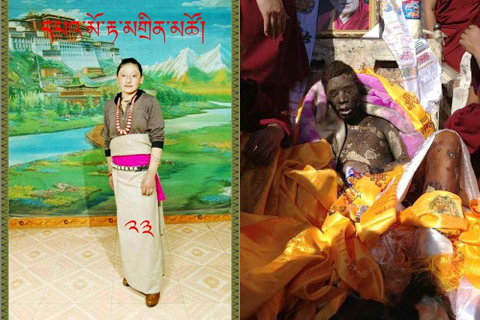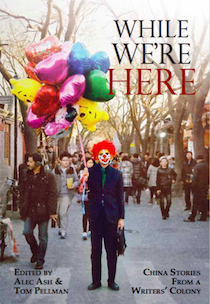A thangka of blood
A dispatch from troubled Tibet, and a return to blogging in China
Dorjee Lhundup, a father of two in his mid-twenties, made his living painting the religious thangka scrolls – clouds, mountains and deities in bright reds, blues, whites and gold – that Rebgong county in the historical Tibetan province of Amdo is famous for. In death his charred body was as colourful, wrapped in orange, violet and white khatas, the ceremonial scarf. He set himself on fire last Sunday.
Kalsang Jinpa was eighteen years old when he went to Rebgong town's Dolma square to kill himself, four days later. He opened a can of flammable liquid, poured it methodically over his face and body, and struck a match or lighter. The day before, Tamdin Tso, a young mother in a nearby township, siphoned petrol from a motorbike and did the same. No one knows if she did so calmy, quickly, in a panic – or what her last thoughts were, or what it felt like when the flames ate her flesh.
As the number of Tibetans who have suicided in this way grows – 70 by one count, after today's – it is easier for the individual meaning of each act to be lost in the wider story. It's the old saw: one death is a tragedy, a million is a statistic. In particular I dislike the term self-immolation, which is widely used. "70 self-immolations" does nothing to inspire the fitting emotional response, and as such is no better than Orwell's vilified euphemisms. Call it what it is – killing yourself with fire.
Rebgong was one of the first places I ever went to in China (in the summer of 2007, I taught English in a village up the valley). Last week, I was back there again. I walked Dolma square – a wide grey jigsaw of stones with a stupa in the middle – just two days before it became so bloody, which made the news even more harrowing as I read it. But there is no stretch of imagination, whether you know Tibet or like to chant "Free Tibet", that can give you empathy of such a thing.
The motivation behind such desperation is in respects unfathomably personal, and statements by the Tibetan government in exile that the causes are "self-evident" ("political repression, economic marginalisation, environmental destruction and cultural assimilation") cheapen the act, which some would call brave and others cowardly. I do not share his belief in resurrection, but I find it especially disturbing that the Dalai Lama has not spoken out again these suicides, which would without doubt all but end them. No price is too dear for that.

My dispatch in the Economist's Analects blog today looks at root grievances in the area. (The first comment, from "wolfgang21", is about "Tibetan Warmongers" who "self-BBQ". A reply to it reads "at least you appropriated a username worthy of a Nazi, Han". Sigh.) Also online today, in Danwei you can now read in full my profile of a Tibetan friend from Rebgong, which featured as a chapter in the new book of reportage Chinese Characters.
This all coincides, of course, with Beijing's political monkey show, the 18th Party Congress (or "18th big one" in shorthand Chinese) which will ratify its new leadership. Both news items greet me as I find myself living in China again, after two years in London running literary interviews for this excellent website. When I was here before, learning Mandarin from '08 to '10, I wrote the blog Six, which followed six post-80s generation Chinese in Beijing. Now I've migrated to this domain.
The Anthill, as well as being a space for me to post my motley ramblings, is also an experiment. It is conceived of as an "open blog" for narrative writing from or on China. That means that anyone can submit a story, and in time commission them too, if they share my love of good writing with a sense of story and an irreverent eye, including fiction, oral history, satire and personal vignettes.
If you don't want to miss new posts, follow the Anthill on twitter, facebook or RSS. Or all three if you are an internet masochist. It's good to be back.

















